This section contains entries about our botanizing in Baja California written for the UC BEE (Oct 2012 to Aug 2021)
and The UC Bee Hive (2022-), monthly newsletters for volunteers and staff of the UC Berkeley Botanical Garden.
Click on any photo for a larger image.
BEE HIVE OCT 2023 (Cont.)
November 2022 — San Javier
We had a guest stay with us for a few weeks this season and because of her interest in the California missions, we thought that before she flew home out of Loreto, she'd enjoy a trip up to San Javier, only about 45 minutes east of town in the Sierra de la Giganta.
We first visited San Javier in December 2010, not long after their Fiestas Patronales (patron saint's day celebrations) and what we remembered most vividly about the mission was the wall that appeared to be weeping — honey, that is.
During that visit we were allowed to a climb up to the roof of the Mission where we learned about the traditional process that the men at work were using to seal the roof using a mixture of lime and agave juice cooked in large wooden barrels.
This time, we didn't see any honey leaking out of the gaps between the rough-hewn volcanic rocks, but in the same area up high on the wall there was now a beehive attached below a ledge, and we could watch the bees flying around it.
There are a few amenities in town: a couple of hostels, a camping area, a souvenir shop, a small cafe and a mini-mart. More booths and stores pop up during the Fiestas Patronales, when thousands ascend the mountains to the town for a 2-3 day party. In 2010, the road was only paved less than half way to the Mission, just up the worst part of the grade.
For a full list of plants on this trip (with family, Latin name and common names in both English and Spanish), visit this page.
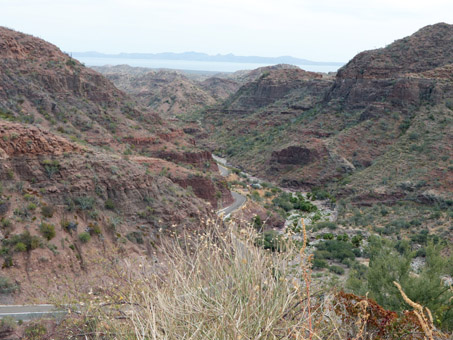
View to the east from near the top of the grade of the Gulf and the road that climbs up through the San Javier Arroyo. This vista point was the end of the pavement in December 2010.
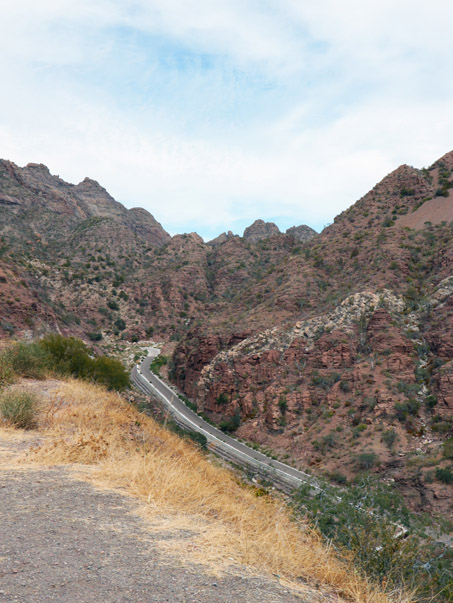
This switchback is an amazing feat of engineering. On the left is a drop off so the road is hanging on the edge of the steep volcanic slope.
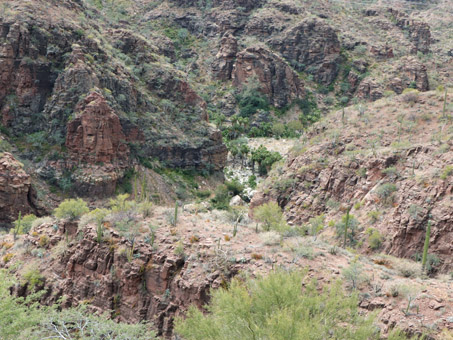
Looking way down into the canyon below the vista point. Those are large palm trees in that pale area of large rocks and boulders.
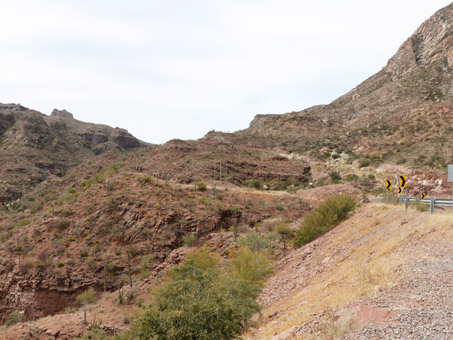
Not much more elevation to climb, but still a lot of hairpins before that saddle in the distance.
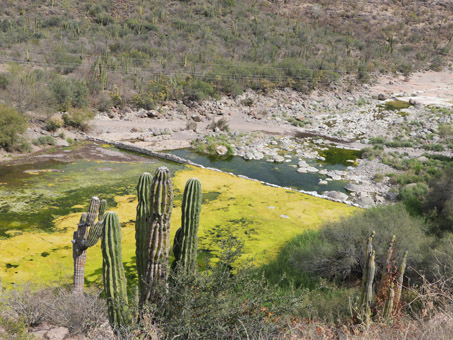
There is often water in the arroyo and here it's held back by a small dam (represa). The bright yellow-green mass is algae.
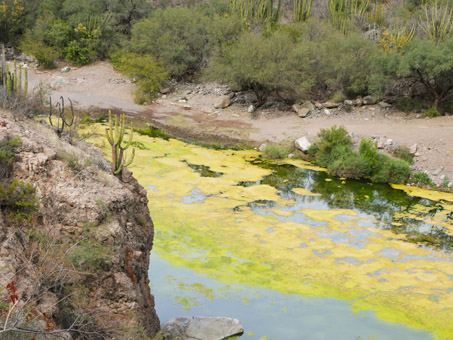
Another view from the main road down into the arroyo. The water isn't very deep, but is important for family orchards & gardens.
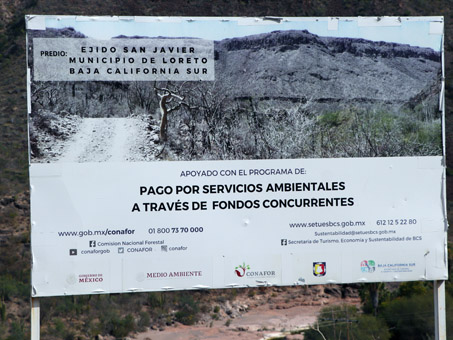
Sign at the entrance to the town of San Javier saying that the Ejido is/has been supported by a government program that provides funding for the development of local conservation programs focused on the sustainable use of resources.
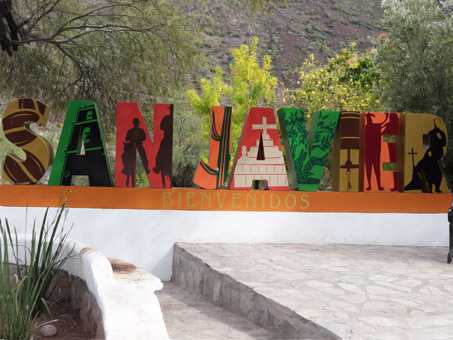
Colorful town sign, one of many popping up all over the peninsula. Each letter depicts iconic historical and cultural aspects of the region such as the missions, wine making, rock art and ranching.
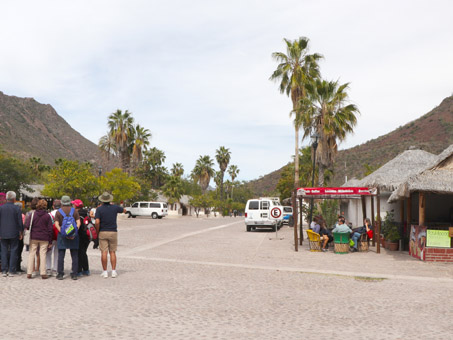
Local tour companies bring visitors to the mission in vans every day.
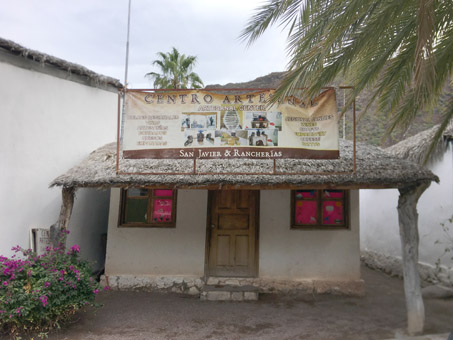
Artisanal Center for San Javier and the local ranches. Unfortunately, it was closed during our visit.
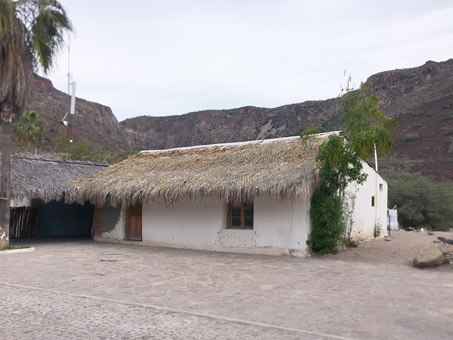
Local residence. The palm roof is typical for the region where fan palm trees are common in the arroyos and a renewable resource.
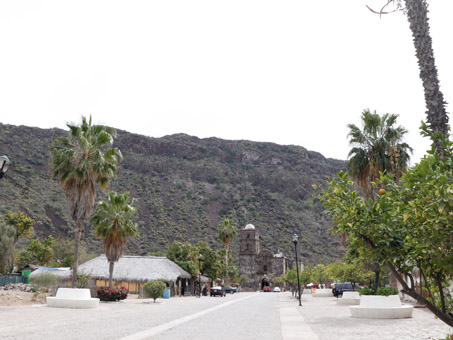
Long view down the cobbled boulevard to the Mission. The canyon walls are close behind the mission.
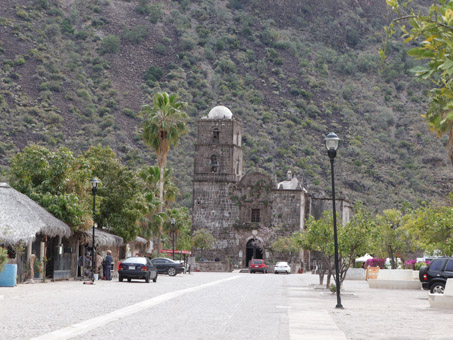
Hostel, souvenir store and cafe on the left just before the Mission.
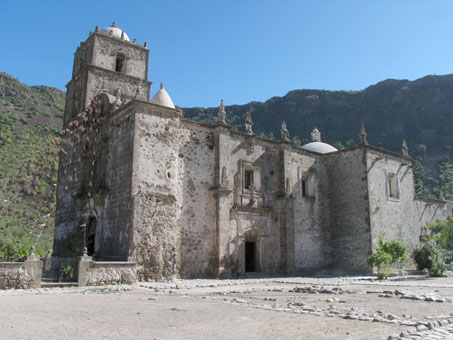
The Mission in Dec. 2010 with streamers from the Fiestas Patronales.
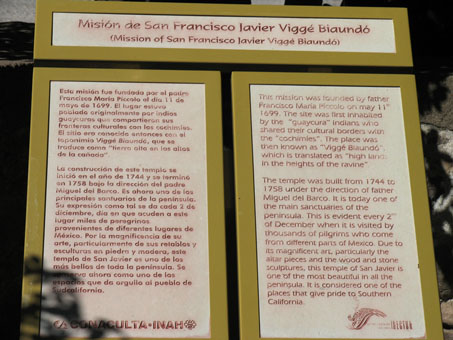
Interpretive sign from 2010.
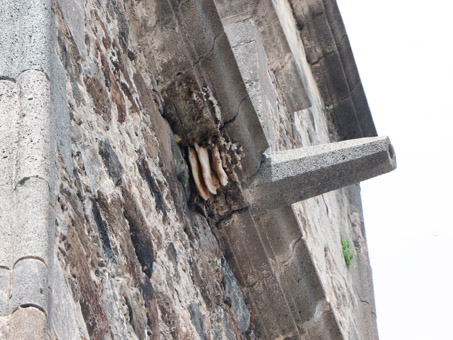
Combs of the beehive.
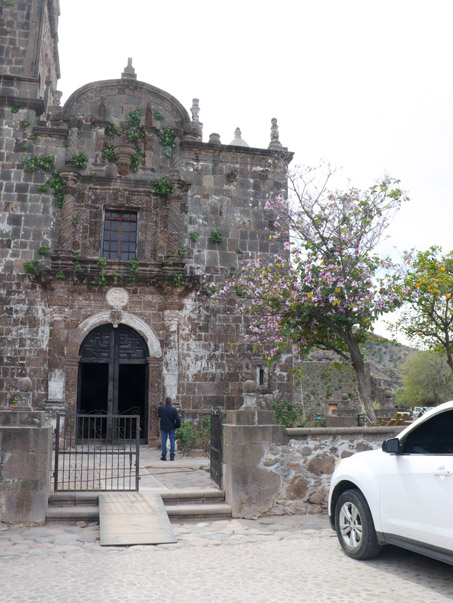
The Jesuit Misión San Francisco Javier de Viggé-Biaundó was dedicated in 1699 and the structures built between 1744 and 1758 from local rock. After Loreto (1697), it was the second of the California missions.
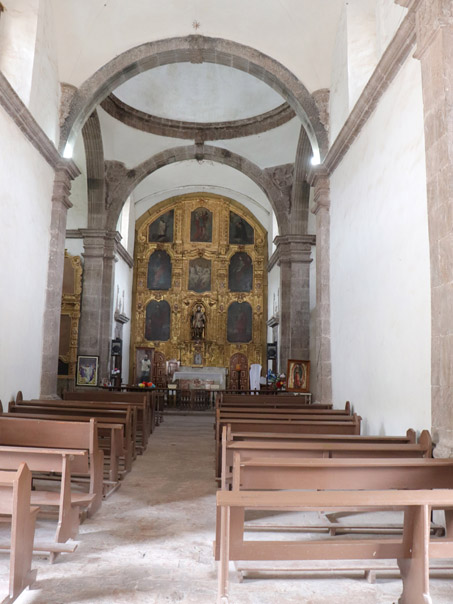
Well preserved alter in the mission chapel (capilla). I don't know if there were bats in the belfry, but there was at least one bird's nest up high on a ledge. A docent was happy to give us a brief history.
Besides honey bees, the mission also has quite a collection of Baja California Rock-nettle / Pega-pega (Eucnide cordata) plants inhabiting wall space (see photos above of the entrance to the mission plus below). This is a native perennial species that seems to be thriving here. There were many plants present during our 2010 trip in the same areas, mostly but not always on a E, W or N facing wall where it wouldn't have all day sun. Hummingbirds can usually be seen feeding from the white, tubular-like flower (there are actually five erect petals rather than a tube) while getting a good dusting of pollen on their heads.
Unlike some species in the genus that are cliff dwellers and self-seed themselves because the fruiting pedicels elongate and curve backward towards the cliff, Eucnide cordata seems most common in arroyos and riparian areas where it grows on the ground; the pedicels are short and stout and don't elongate. The dry brown fruit capsule is full of many minute seeds which makes me wonder if insects (e.g. ants), small rodents or lizards may play a part in seeding them in these walls.
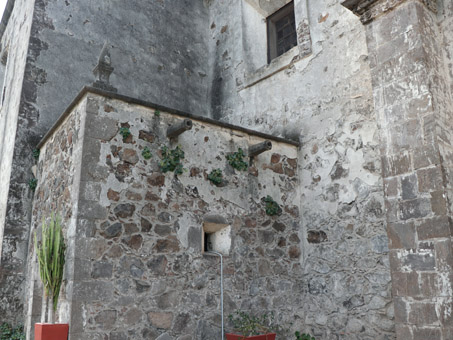
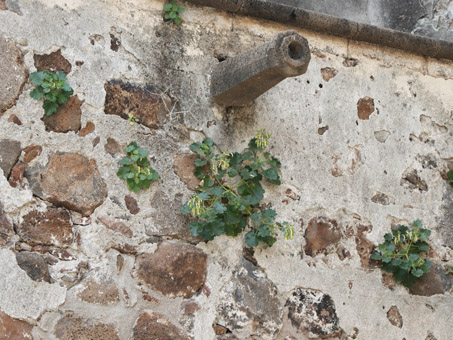
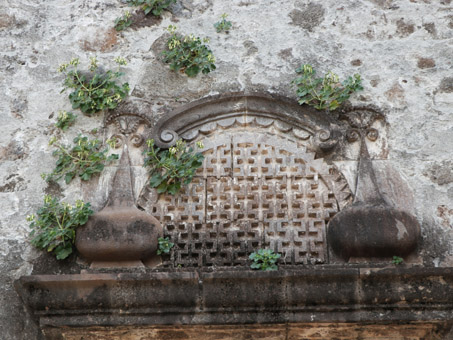
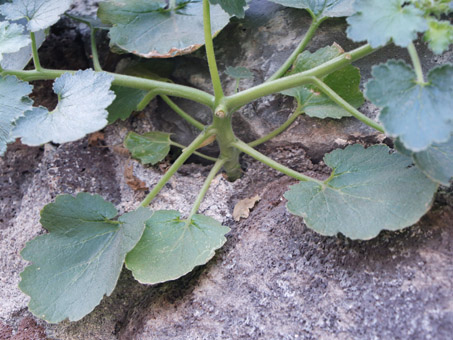
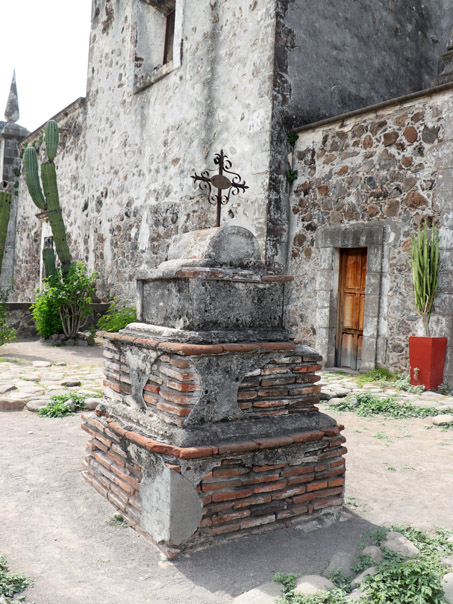
The mission's south yard and small cemetery. Note the lack of Rock-nettle on the walls. Instead, the bees rule on this side, except in the corner (right of cross) where three plants are growing on the E wall.
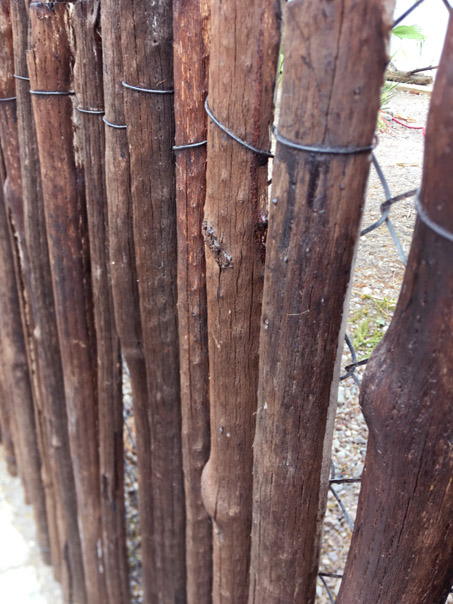
It's common to see fences made from whatever "woody" plant is common and abundant in an area, such as Palo Adán or Ocotillo (Fouquieria spp.), Datilillo (Agave valida) and Mesquite.
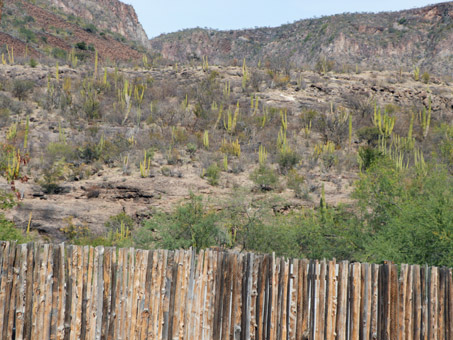
The hillside vegetation all along the road from the top of the grade to San Javier is dominated by Organpipe Cactus / Pitahaya Dulce (Stenocereus thurberi).
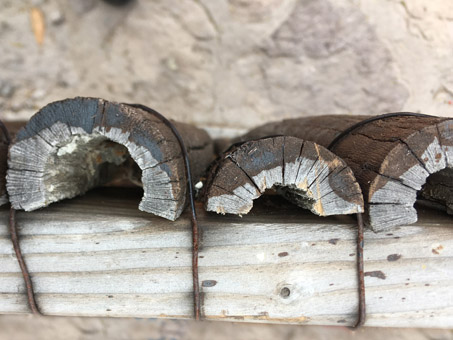
So the fence posts in the previous photos are the split, dried stems of Organpipe cactus which are hollow, lightweight & strong. The cacti aren't harvested live; instead, they are collected from dead, dry plants.
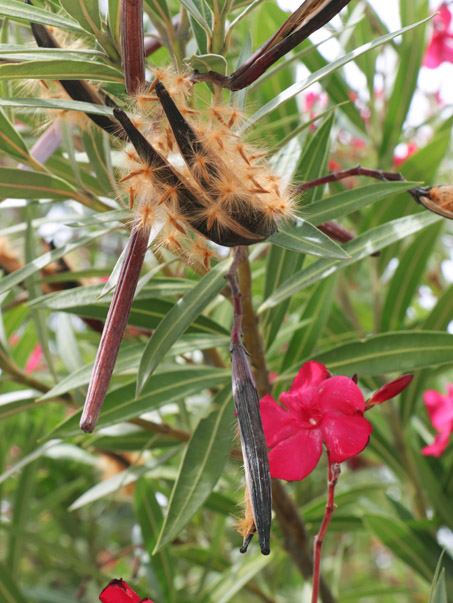
Oleander / Laurel (Nerium oleander) is a favorite of gardeners in Baja California. It is tough, doesn't require much water & comes in many colors.
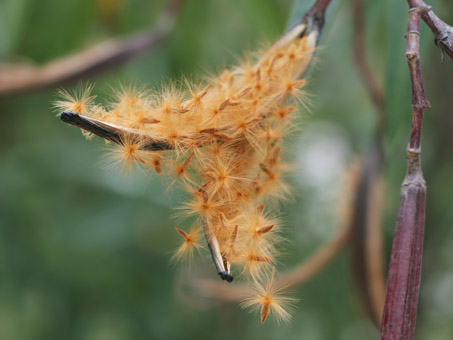
Oleander fruit is composed of two long, narrow united follicles. This was the first time I'd seen the pods after the seeds had burst out. Quite a sight and lovely rusty color.
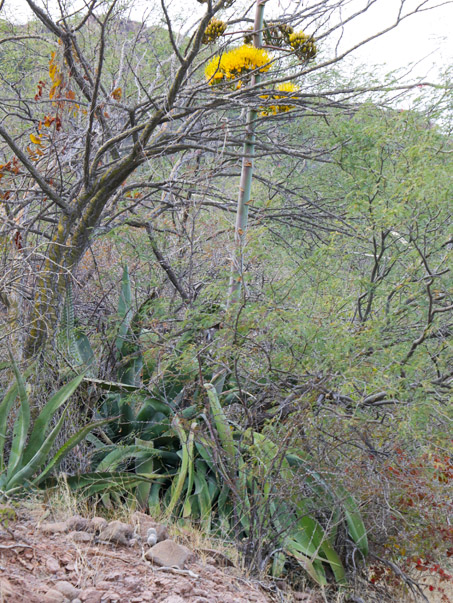
Giganta Fiber Agave / Lechuguilla, Maguey (Agave aurea). The newer leaves of the rosette are generally ascending while the older ones droop as above. The entire plant can exceed 1.2 m H x 2 m D.
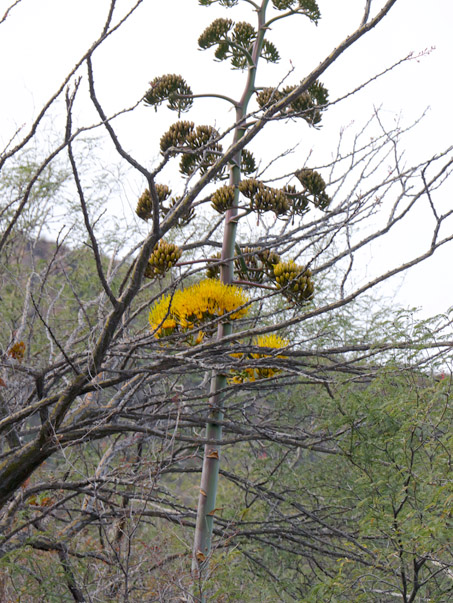
These large endemic agaves, with flowering stalks 4-6 m tall, looked like flaming torches sticking up above the surrounding vegetation.
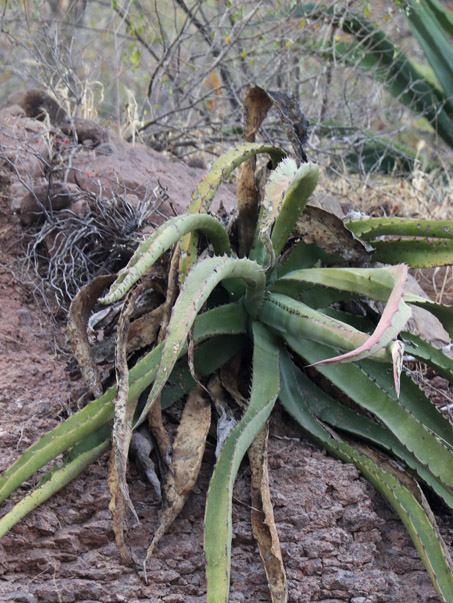
The strappy leaves can reach c. 1 m long and 10 cm W. The brown teeth are irregular along the margins.
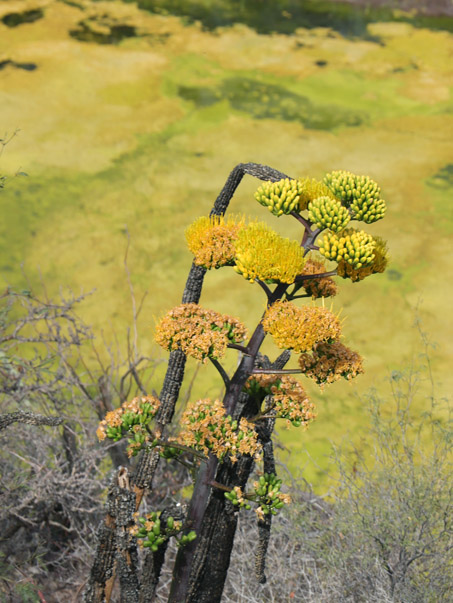
Individual flowers are yellow & 4.5-5 cm L. They are an important nectar & pollen source for birds & insects over the winter (Dec-Mar).
Aquatic Plants in the Arroyo
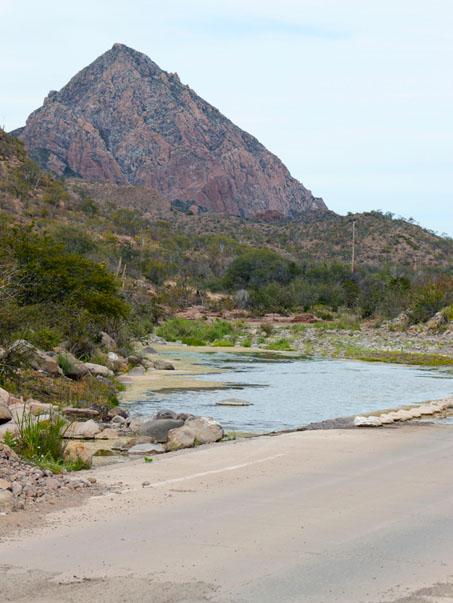
Water crossing just west of the grade we climbed earlier in the day. The arroyo bed meanders, criss-crossing the highway at several points.
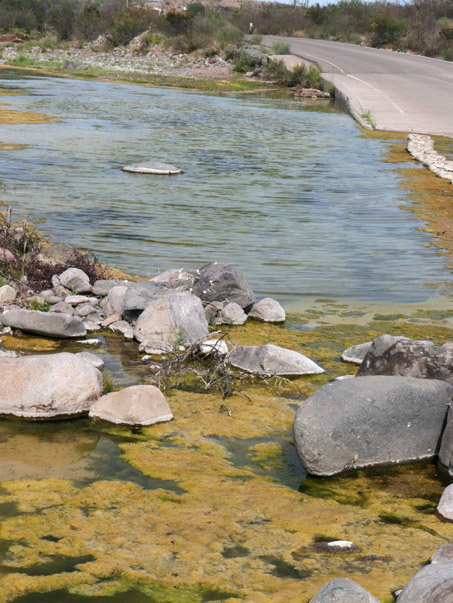
Algal mats, locally referred to as lama, around the edges of the pools in the arroyo. When it dries, it looks and feels a lot like thick felt.
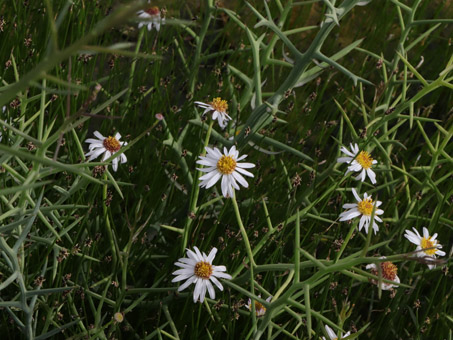
Southern Spiny Aster / Buena Mujer (Chloracantha spinosa var. spinosissima). After experiencing this plant, you may prefer another common name: Spiny Devil-Weed, The stiff, pointy stems are sharp. Its leaves are 10-50 mm L but early deciduous, so it appears to be leafless.
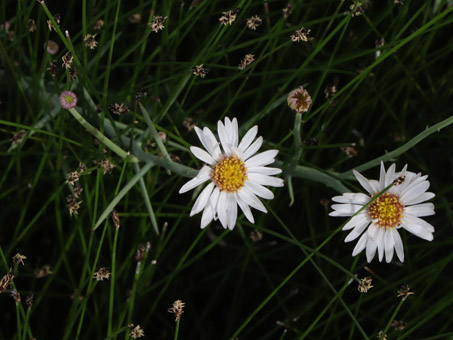
This sBC/BCS endemic variety occurs in wetlands & around seeps, usually in mountain areas like here. It spreads by rhizomes & can form dense thickets. The flowers are 20-25 mm D with 10-33 white rays.
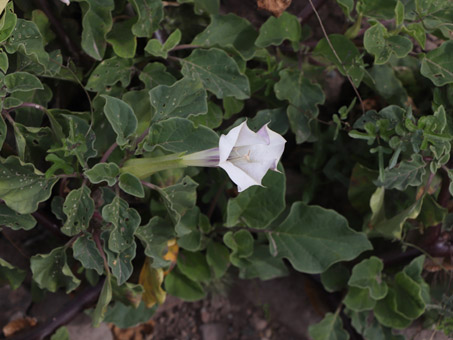
Jimson Weed / Toloache (Datura discolor). This plant, near the edge of the stream was just starting to unfurl some of its fragrant flowers late afternoon. Bats and Sphinx moths are main pollinators.
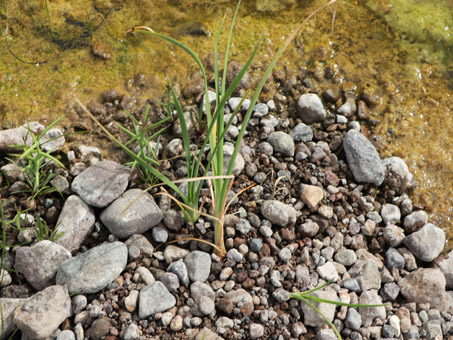
Cattail / Tule (Typha sp.) & Buena mujer
sprouts in saturated soil at the stream edge. The yellow-green above is that same algal mat.
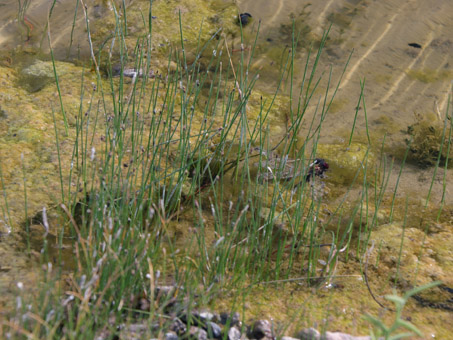
Parish Spike-Rush / Junquillo (Eleocharis parishii) is a native perennial that is grass-like in growth, spreading by creeping rhizomes.
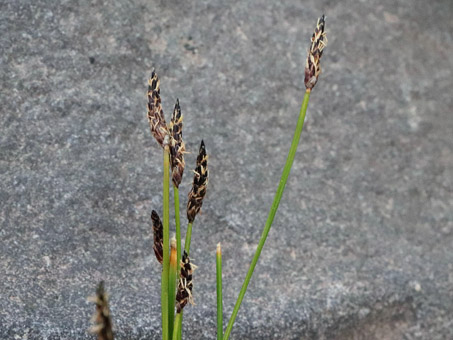
Parish Spike-Rush inflorescences. Each spikelet here is c. 20 mm L. The cream linear structures are the stamens. Styles are bi- or trifid.
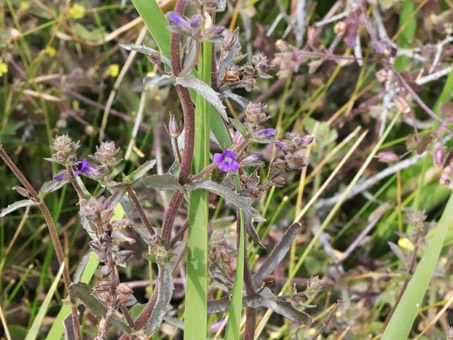
Blue Streamwort (Stemodia durantifolia var. durantifolia) along with Monkeyflower, Eclipta & Cattail sprouts, all in wet soil at streamside.
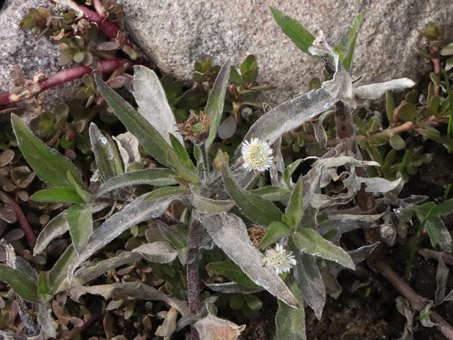
False Daisy / Clavel del Pozo
(Eclipta prostrata). The small, cream composite flower heads are c. 5-8 mm D. Leaves are somewhat raspy.
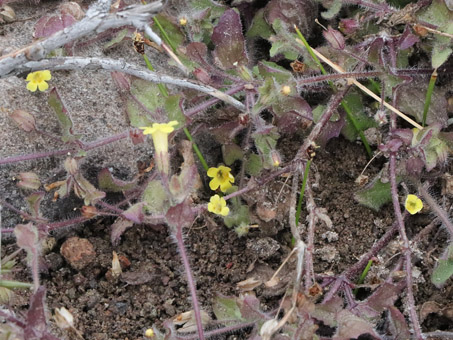
Many-flowered Monkeyflower (Erythranthe floribunda) herbage has long, soft, erect hairs.
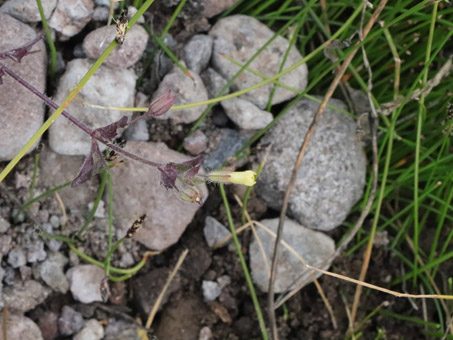
The flowers are c. 5-12 mm L x 3-4 mm W. Here with Parish Spikerush at streamside.
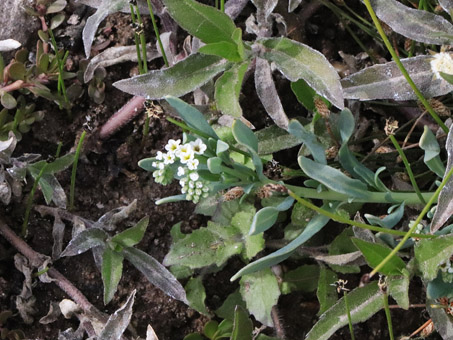
Alkali Heliotrope / Hierba del Sapo (Heliotropium curassavicum var. oculatum). Growing with Blue Streamwort and False-daisy.
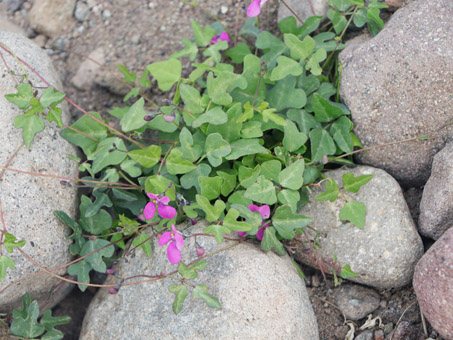
Compare the lush growth of this Slimjim Bean (Phaseolus filiformis) growing in the shade at streamside with the one I saw in the arroyo.
That's it for this month. As you may have noticed, the last few entries have been reports about our time on the peninsula last season (Nov 22 - Feb 23 so far). Our new season is coming up fast as we prepare for our annual southerly migration. There will be more from last season to share next month but after that, who knows what's next?. So until then...hasta pronto
Debra Valov — Curatorial Volunteer
References and Literature Cited
Columbus, J.T. 2012. Bouteloua barbata var. barbata, in Jepson Flora Project (eds.). Jepson eFlora, https://ucjeps.berkeley.edu/eflora/eflora_display.php?tid=71517, accessed 31-Aug-2023.
Keil, D.J. 2012. Trichoptilium incisum, in Jepson Flora Project (eds.) Jepson eFlora, https://ucjeps.berkeley.edu/eflora/eflora_display.php?tid=5455, accessed 31-Aug-2023.
Rebman, J. P., J. Gibson, and K. Rich, 2016. Annotated checklist of the vascular plants of Baja California, Mexico. Proceedings of the San Diego Society of Natural History, No. 45, 15 November 2016. San Diego Natural History Museum, San Diego, CA. Full text available online.
Rebman, J. P and Roberts, N. C. (2012). Baja California Plant Field Guide. San Diego, CA: Sunbelt Publications. Descriptions and distribution.
Valov, D. (2020). An Annotated Checklist of the Vascular Plants of Mulegé, Baja California, Mexico. Madroño 67(3), 115-160, (23 December 2020). https://doi.org/10.3120/0024-9637-67.3.115
Wiggins, I. L. (1980). The Flora of Baja California. Stanford University Press. Keys and descriptions.















































